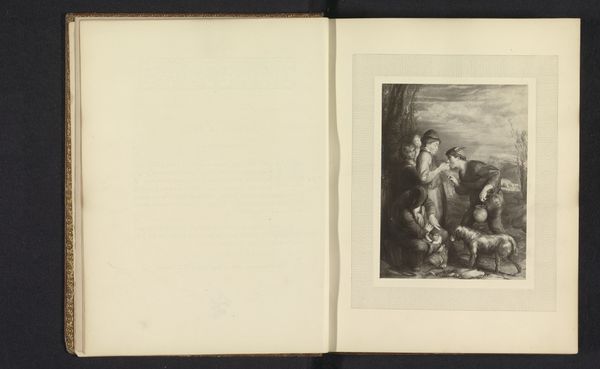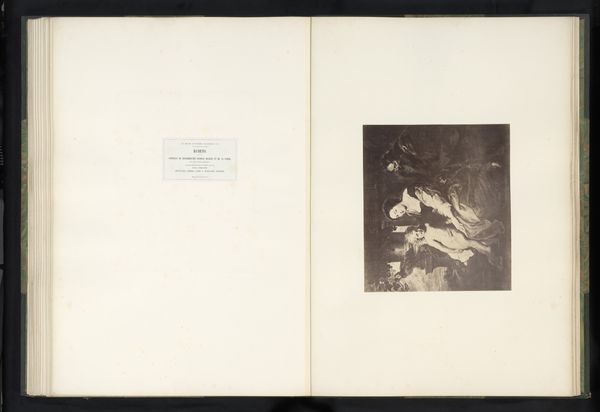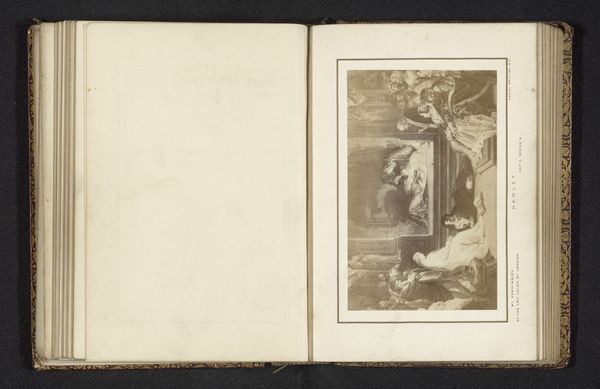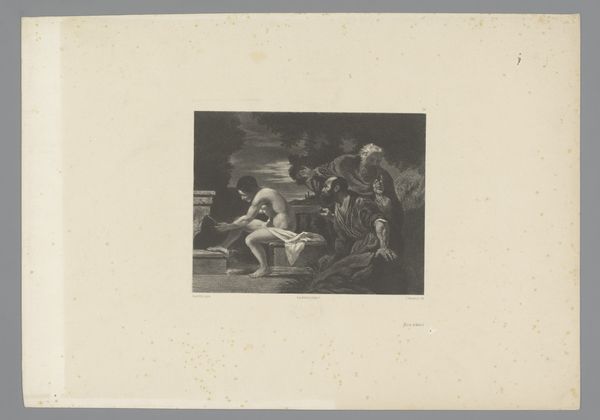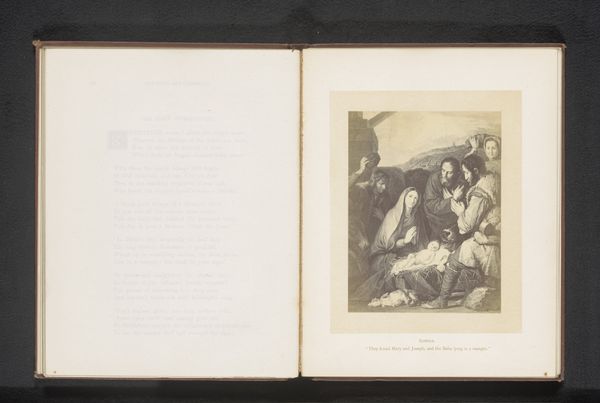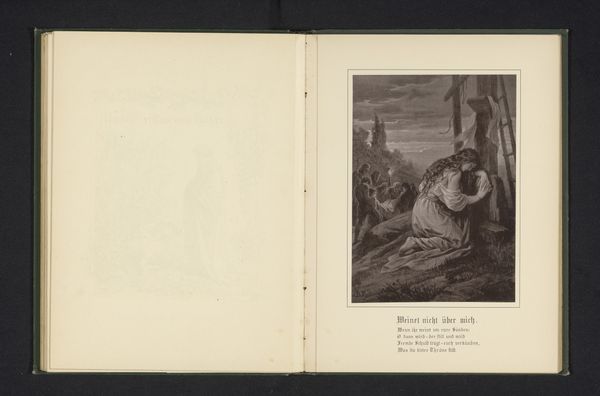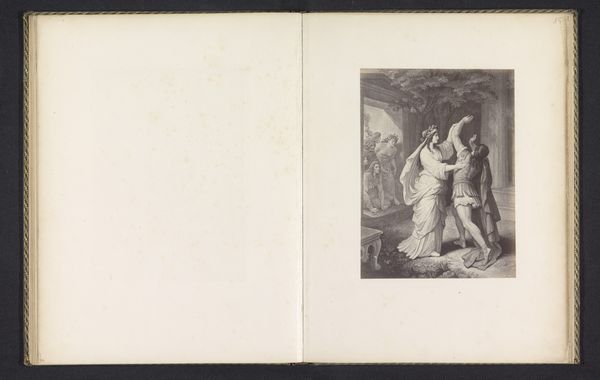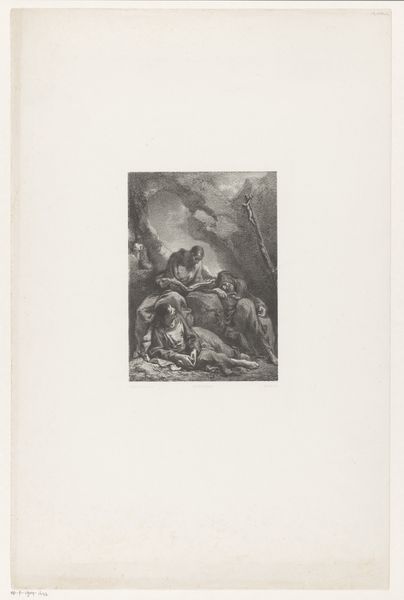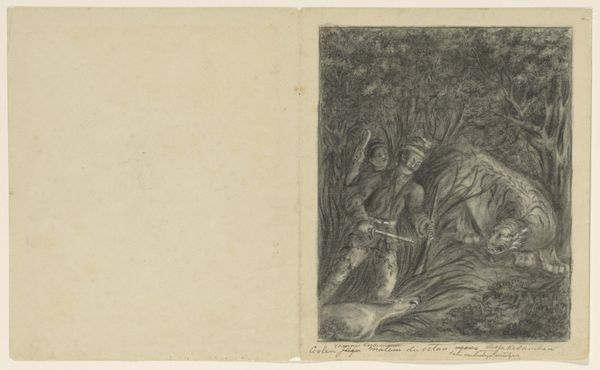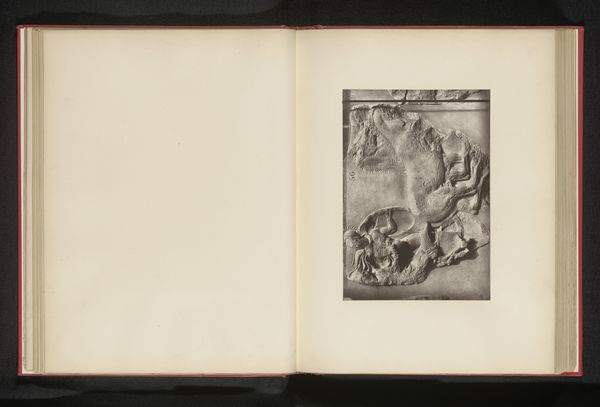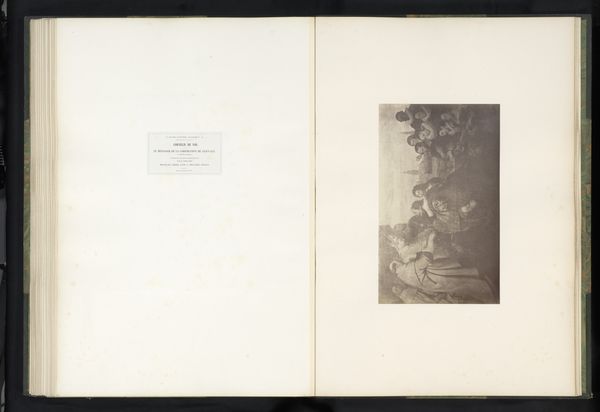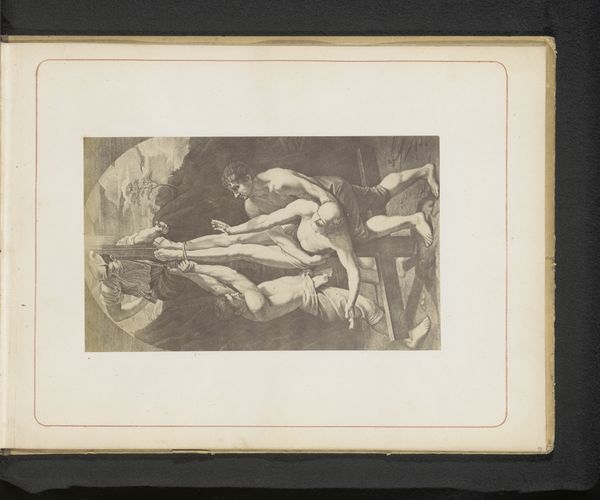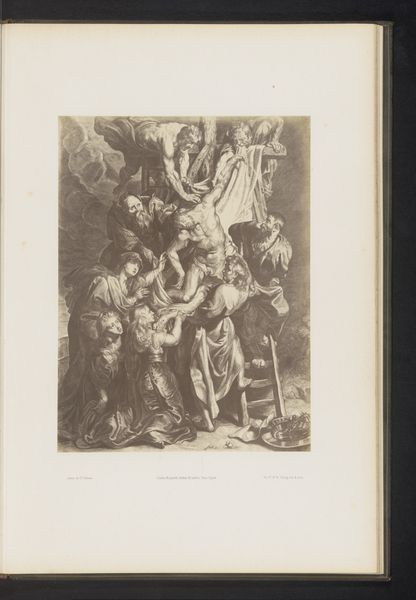
Fotoreproductie van de Heilige Drie-eenheid door Peter Paul Rubens before 1861
0:00
0:00
Dimensions: height 318 mm, width 302 mm
Copyright: Rijks Museum: Open Domain
Curator: Here we have a photograph, "Fotoreproductie van de Heilige Drie-eenheid door Peter Paul Rubens", taken before 1861 by Edmond Fierlants. It's a photographic print of, as the title suggests, Rubens’ depiction of the Holy Trinity. Editor: Oh, instantly dramatic. The muted sepia tones almost amplify the intensity, creating this overwhelming feeling of ethereal grief and Baroque magnificence, even in reproduction. Curator: Absolutely. The Baroque style is evident in the dramatic use of light and shadow, which draws your eye to the central figures of the Holy Trinity, emphasizing the history-painting and the allegorical themes within. We can recognize elements of earlier paintings. The arrangement has echoes of traditional lamentation scenes in Christian art, but transposed into Rubens’ more dynamic mode. Editor: The shadows definitely heighten the feeling of tragedy, while the radiant light shining down seems almost reluctant, as though heaven itself is hesitant to acknowledge such profound sorrow. Tell me, why create a photo of a painting? Seems a bit removed, no? Curator: In the 19th century, photographic reproductions served a crucial role in disseminating art and knowledge, making masterpieces like Rubens’ Trinity accessible to a broader audience who may not have been able to view the original artwork. Think of it as early art history on demand! It created new interpretive possibilities. Editor: That's a brilliant point! So this image isn’t just about religious iconography, but also speaks to the evolving relationship between art, technology, and cultural preservation. This makes me think of Walter Benjamin’s "The Work of Art in the Age of Mechanical Reproduction." It invites considering both the aura and democratization of art in society, no? Curator: Precisely! And Fierlants’ photographic lens not only captures the literal scene but also offers a lens—no pun intended—through which we can understand 19th-century values regarding art and its reproduction. A photo adds layers to this work. Editor: Makes me reflect on this: Every layer and interpretation alters its resonance. Curator: Indeed. Art speaks across time, shaped by each generation's gaze and innovations in how we record it.
Comments
No comments
Be the first to comment and join the conversation on the ultimate creative platform.
